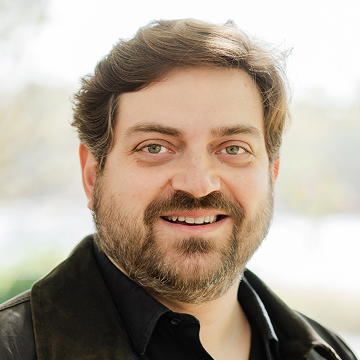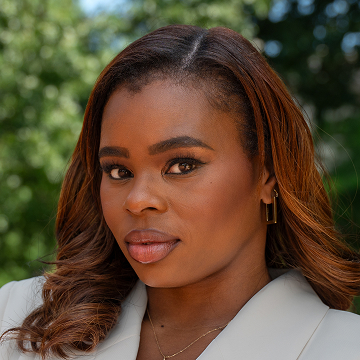The top criticism lobbed at the U.S. attorney for the Eastern District of Virginia, Lindsey Halligan — her lack of prosecutorial experience — is now the object of her signature case’s potential undoing, a number of experienced legal experts told NOTUS.
On Wednesday, U.S. District Judge Michael Nachmanoff became the second jurist involved to express extreme skepticism over the way Halligan presented the case against former FBI Director James Comey to the grand jury, focusing on the confusing way she obtained their indictment.
Questioning Halligan in a Virginia federal courtroom, Nachmanoff heard what sounded like a stunning revelation: After failing to succeed on a three-count indictment, Halligan submitted to a magistrate judge a revised two-count indictment that the grand jury never formally approved on its own.
It’s a technicality that could tank the case, according to half-a-dozen attorneys and former prosecutors who spoke to NOTUS on Wednesday afternoon.
Liam O’Grady, a former federal judge in this district, told NOTUS that the normal procedure is that a prosecutor would simply go back to the grand jury and present the case all over again.
“I don’t think she appreciated the need to. I think she’s just very inexperienced,” the retired judge said.
Going back to the grand jury on Sept. 25 would likely have been a minor task; the first time around deliberations only took two hours. But a transcript viewed by NOTUS shows that it was already 6:47 p.m. — much later than normal, as the magistrate judge in court that evening noted at the time. And Halligan would have had to ask the grand jury to stay even later.
Except she was up against a hard deadline. The five-year window to indict Comey was about to run out.
And so, Halligan opted for the easy route. She submitted both versions of the indictment alongside the jury foreperson — a maneuver that sent Magistrate Judge Lindsey Vaala for a loop.
“And for each count and for each defendant for all the indictments, did a sufficient number, meaning at least 12, of grand jurors return a true bill?” Vaala asked that evening.
“One exception,” the foreperson responded.
Vaala expressed her confusion at getting two versions of an indictment that seemed identical — save for a missing criminal count — and had the rejected indictment annotated with a scribbled note clarifying that grand jurors did not conclude in finding an indictment in “count 1 only.”
Vaala then turned to Halligan.
“With respect to this case, Ms. Halligan, since you’ve provided this to the court, I assume you intended to make it public, so these both will go on the docket in -272, now that it’s been presented in open court. I just want to make sure you understand that and that was your intention,” Vaala said.
“OK, understood,” Halligan responded.
That moment planted the seeds for what would erupt as a disastrous hearing on Wednesday, in which Judge Nachmanoff, who is now overseeing the case, would cast doubt on the legitimacy of the indictment.
“I think it’s a big issue,” O’Grady, the retired judge, told NOTUS. “There’s a D.C. circuit case that says if the grand jury wasn’t present when an indictment was signed then it’s fatally flawed. You want the indictment to be perfect.”
The Department of Justice is now on the defensive with little more than a month to go before a scheduled trial in early January. On Wednesday afternoon, prosecutor Tyler Lemons made a court filing arguing that the indictment shouldn’t be dismissed because “the government course of conduct here was permissible and proper.”
“The constitutional function and purpose of the grand jury, in all possible respects, was achieved and respected in this indictment,” he wrote.
After all, he stressed, “the two charges contained in that indictment are identical to the second and third charges that were included in the proposed indictment that was provided to the grand jury.”
But other legal experts don’t find that explanation convincing.
“The whole requirement of indictment by a grand jury is mandated by the Fifth Amendment to the United States Constitution. So is this a big deal? Yes,” said Ciara Torres-Spelliscy, who teaches constitutional law at Stetson University.
“Just because a clock is running out does not empower the prosecutor to cut corners,” she added.
Sen. Sheldon Whitehouse, who sits on the Senate Judiciary Committee, publicly commented that, “If Halligan pulled a grand jury switcheroo, and did not inform the court, this could be her deepest trouble yet.”
Scott J. Shapiro, a Yale Law School professor who publicly joked about the sudden nosedive in the case, told NOTUS: “I have nothing interesting to say about the Lindsey Halligan case except for LOL.”
Legal scholars are now suggesting that Comey might be off the hook if this indictment gets dismissed, given that the five-year statute of limitations has come and gone. However, a former public corruption prosecutor told NOTUS that Halligan’s team could rely on a federal law that “tolls” the clock and gives the government an extra six months after dismissal to give it another shot.
However, that wouldn’t apply if Nachmanoff concludes that Halligan engaged in a vindictive prosecution, which is what he’s currently considering.
A closer look at how exactly this debacle played out also hints at how messy it could get now.
Halligan’s first try was a three-count indictment in which the jurors rejected the first of two accusations that Comey made “false statements” to Congress. The count claims he lied when he “did not remember ‘being taught’” in September 2016 about then-presidential candidate Hillary Clinton’s approval of a plan to distract the public with notions of Donald Trump using Russian hackers to tamper with the U.S. election that year.
The indictment misquoted the exchange between Comey and Sen. Lindsey Graham — already a mistake that has since shocked legal scholars. For unknown reasons, the grand jury rejected that criminal count and approved two others.
Earlier this week, things got even more complicated when Magistrate Judge William Fitzpatrick, who is also overseeing the case, ruled that Halligan “may have tainted the grand jury proceedings” by having it listen to testimony from an FBI agent who appears to have tapped evidence they shouldn’t have had access to — and making matters worse, Halligan made two comments before jurors that also broke the rules.
Halligan now has to defend these decisions while also fighting a challenge to her appointment by Trump, which has drawn skeptical remarks from the South Carolina judge brought into the district to consider the question.
This site is protected by reCAPTCHA, and the Google Privacy Policy and Terms of Service apply. By continuing on NOTUS, you agree to its Terms of Use and Privacy Policy.
Sign in
Log into your free account with your email. Don’t have one?
This site is protected by reCAPTCHA, and the Google Privacy Policy and Terms of Service apply. By continuing on NOTUS, you agree to its Terms of Use and Privacy Policy.
Check your email for a one-time code.
We sent a 4-digit code to . Enter the pin to confirm your account.
New code will be available in 1:00
Let’s try this again.
We encountered an error with the passcode sent to . Please reenter your email.
This site is protected by reCAPTCHA, and the Google Privacy Policy and Terms of Service apply. By continuing on NOTUS, you agree to its Terms of Use and Privacy Policy.


